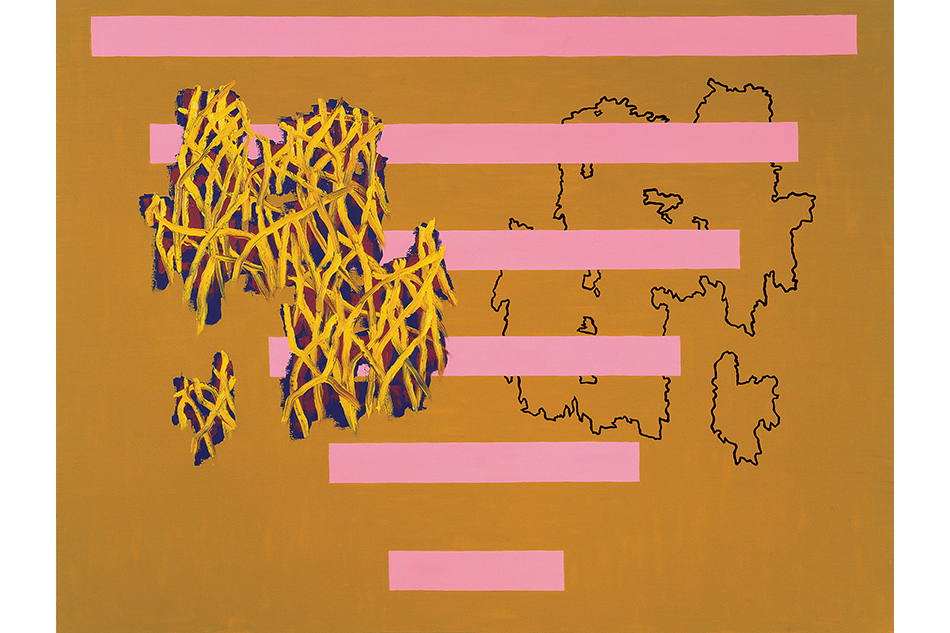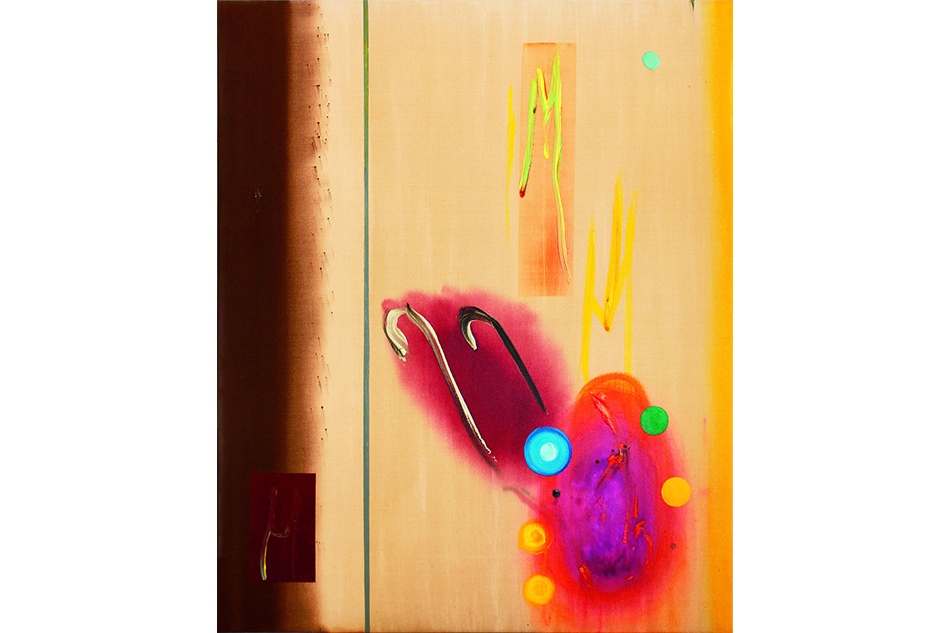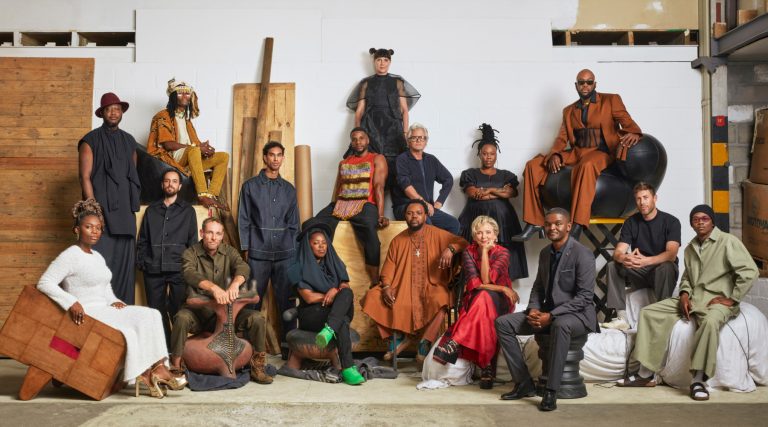
August 21, 2013Carroll Dunham’s Horizontal Bands, 1982, is one of 15 works on view in Cheim & Read’s not-to-be-missed exhibition of ‘80s abstraction, on view until August 30 in New York. © Carroll Dunham, courtesy of Gladstone Gallery. Top: Joan Snyder’s spectacular Beanfield with Music, 1984, measures 12 feet long. Courtesy of John K. Baker and Nina Nielsen
Summertime gallery-going means group exhibitions, some of which seem like a second-tier inventory rollout conceived on autopilot. But others, like the 1980s painting show at New York’s Cheim & Read, are hardly seasonal filler. Organized by critic and curator Raphael Rubenstein, “Reinventing Abstraction” (through August 30) is both a revelation and a reminder. Rubenstein has chosen strong, representative examples by 15 artists who, after initially questioning the tenets of postwar abstraction — gesture, subjectivity and the flat canvas — reclaimed and updated that formula through idiosyncratic, highly personal approaches.
While the dominant art narrative of the 1980s centered on Neo-Geo (as in Peter Halley’s cooly conceptual grids) and Neo-Expressionism (the vigorous paintings of Julian Schnabel, Georg Baselitz and others), Rubenstein brings forward not so much an alternative story as a parallel one. This is the work that other artists, rather than the market and the media, were really looking at. This exhibit reaffirms that the 1980s were a great — although fraught and unsettled — period for painting.
The “reinvention” of the show’s title applies not just to abstraction but to painting more broadly. The focus is on the generation of artists born between 1939 and 1949, who by the ’80s, Rubenstein writes, had found “a bridge between the radical deconstructive abstraction of the ’60s and ’70s . . . [and] a larger painting history and more subjective approaches.” Here we see the return to personal and historical events (Elizabeth Murray, Jack Whitten) and references to natural forms (Carroll Dunham, Terry Winters, Pat Steir). This show, with terrific works by Thomas Nozkowski, Gary Stephan, Jonathan Lasker and David Reed, could have been subtitled “Painters’ Painters.” What emerges is a visual dialogue between these artists, who seem to be in conversation with one another and with art history. Stanley Whitney’s Sixteen Songs, 1984, for example, references Ab-Ex in its scale and composition, and Joan Snyder’s 12-foot Beanfield with Music, also from 1984, conjures Monet’s watery vision of Giverny with its dispersed green rows streaked with violet and milky-blue. It’s a knockout, and it shows that making something that feels radically new doesn’t mean abandoning the past entirely.





